As one of the most well-worn items in almost everyone’s wardrobe, hoodies are the perfect cozy and comfortable way to top off a casual outfit. It’s the type of garment that needs to be able to take you from chilling at home, to going for a run, and everything in between.
That’s why it’s so important that the fabric you choose for your hoodies and sweaters is soft, breathable, lightweight, and durable.
In the sections below, I’ll walk you through six different hoodie fabric options and discuss their unique characteristics.
French Terry Fabric
What is it?
If you’ve seen a bath towel, you’ve seen terrycloth – a fabric with tiny loops of thread on its surface.
French terry is a type of terrycloth with the characteristic loops of thread on one side of the fabric and a smooth surface on the other side, often used for garments.
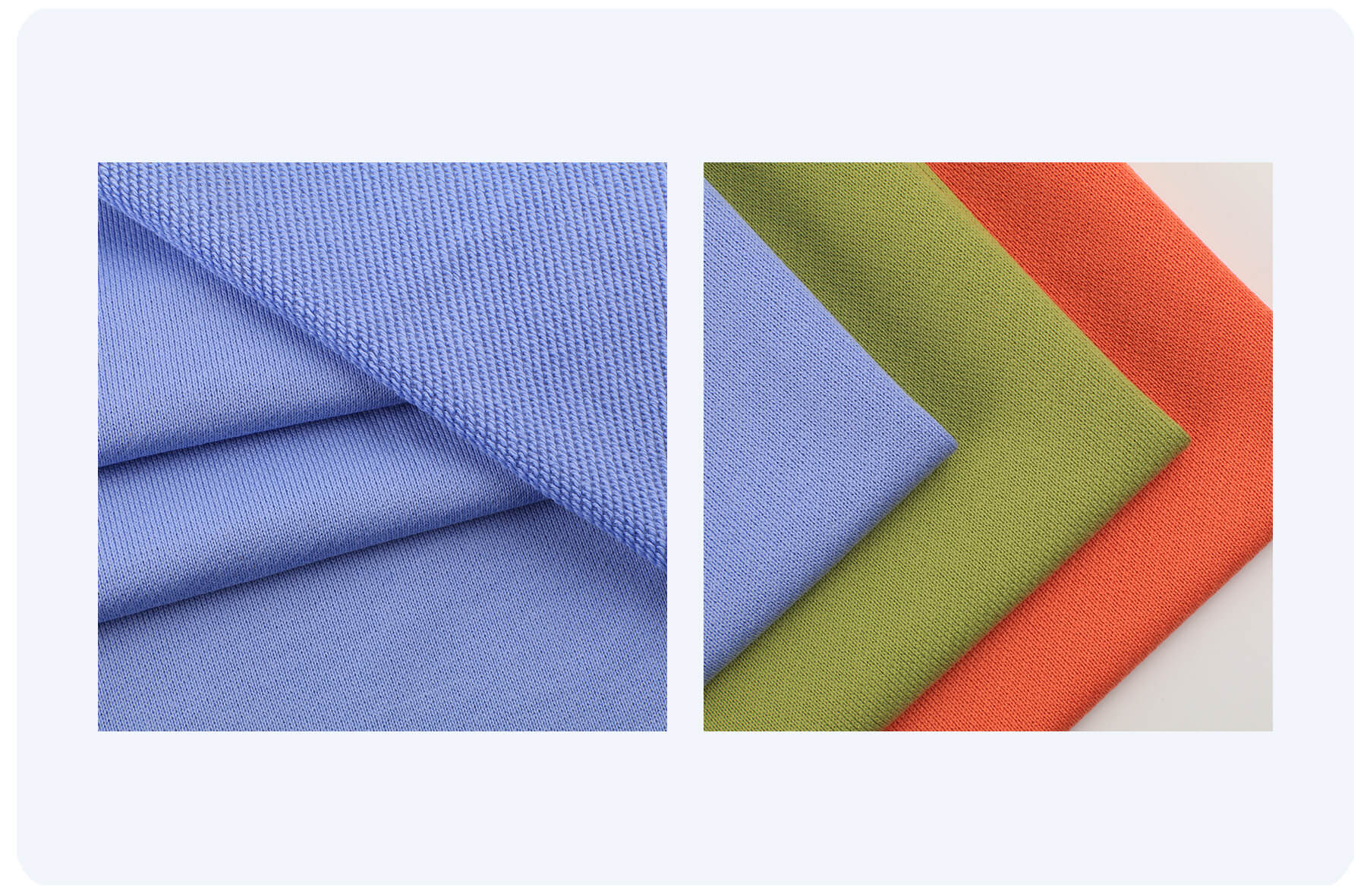
Features
Since terrycloth was, and is, traditionally used for towels – it needs to be soft, absorbent, and warm. French terry is no different in that regard!
However, French terry is the lighter-weight, more fashionable sibling to traditional terrycloth toweling material. It makes for great hoodies, sweaters, and loungewear because it’s comfortable, cozy, and can absorb and pull sweat away from your body.
French terry can be made from a variety of different fibers but the most common are cotton and cotton blends, making it breathable and moisture-wicking. Blends often include rayon for a silkier hand-feel, polyester for durability and abrasion resistance, or spandex for extra stretch.
Pros & Cons
Pros:
- Super cozy and warm
- Moisture (and sweat) wicking
- Stretchy and comfortable to wear
- Versatile – can be worn all year round as a great laying piece
- Breathable (especially when made with a natural fiber like cotton)
Cons:
- Prone to shrinking on the first wash or two
- Not as super-soft as some other hoodie fabrics
- Won’t keep you warm in very cold temperatures
Fleece Fabric
What is it?
Fleece is a fabric usually made from synthetic fibers, generally, polyester on its lining while cotton or cotton blends on the surface. And it is knitted intentionally loose, then brushed or cut to break up the loose threads and create a fuzzy look and feel.
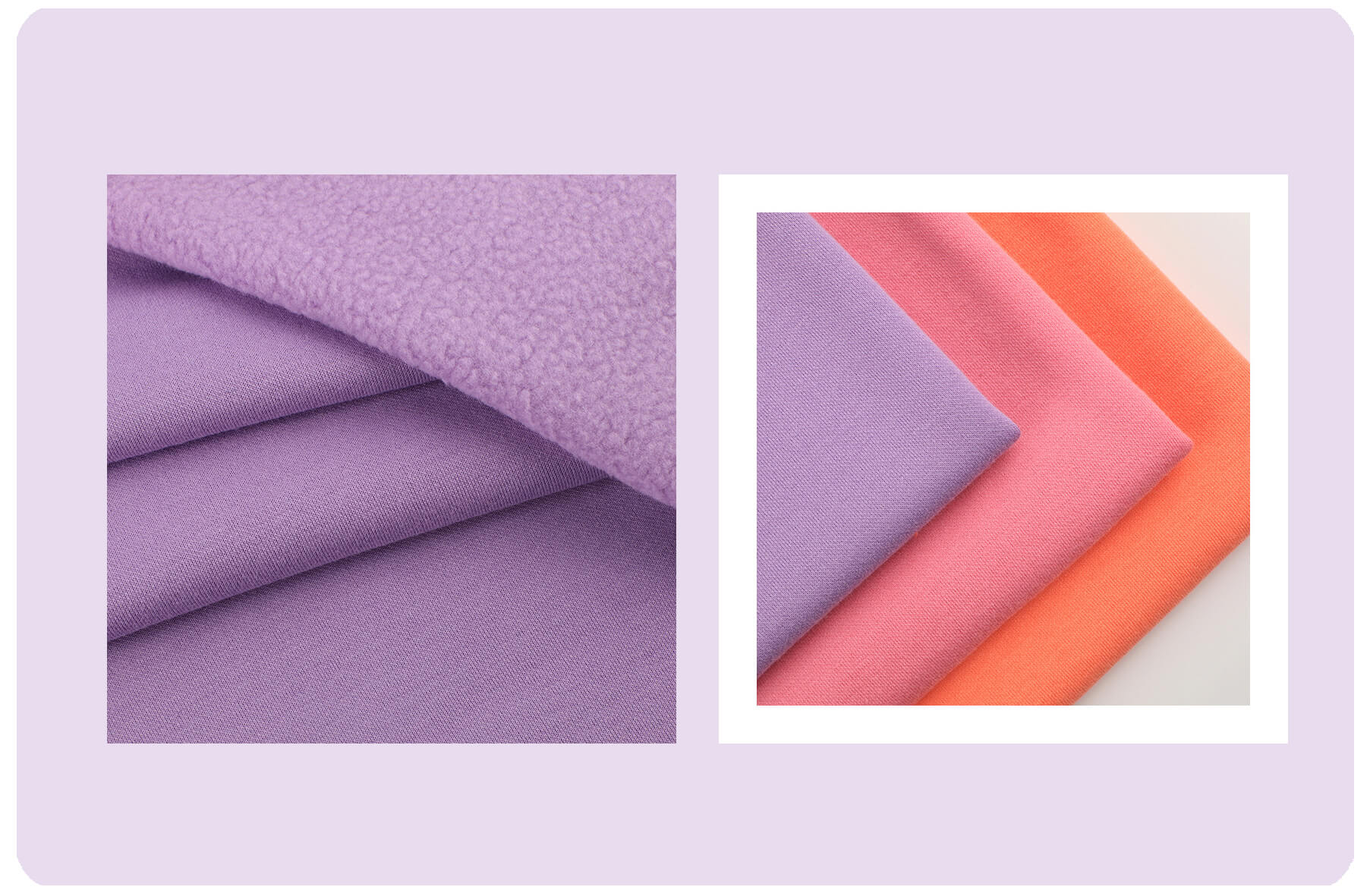
Features
Fleece is a wonderfully warm fabric, with the fluffy threads and textured surface helping to insulate the wearer and hold in body heat. It’s also a great choice for casualwear and loungewear because of how comfortable, soft, and moisture-wicking it is.
The synthetic fibers used to make fleece fabric are strong and durable, making it a good option for hard-wearing garments that need to be resistant to tearing and hold up long term.
It’s an awesome choice for hoodies, especially if you live in a colder climate, as it’s warmer and softer than French terry. Fleece fabrics can be found in a variety of different weights and textures – from super fluffy on both sides to a light fleece brushed only on one side.
Pros & Cons
Pros:
- Warm, great for cold climates
- Soft and comfortable
- Moisture-wicking
- Strong and durable
- Not prone to shrinking
Cons:
- Can be too warm if you live somewhere that never gets colder temperatures
- Can melt when ironed or exposed to heat
- Not as breathable as French terry fabric
Polar Fleece Fabric
What is it?
Polar fleece is just a special type of fleece – as the name suggests, it’s a heavy weight fleece fabric perfect for cold, dare I say “polar”, temperatures.
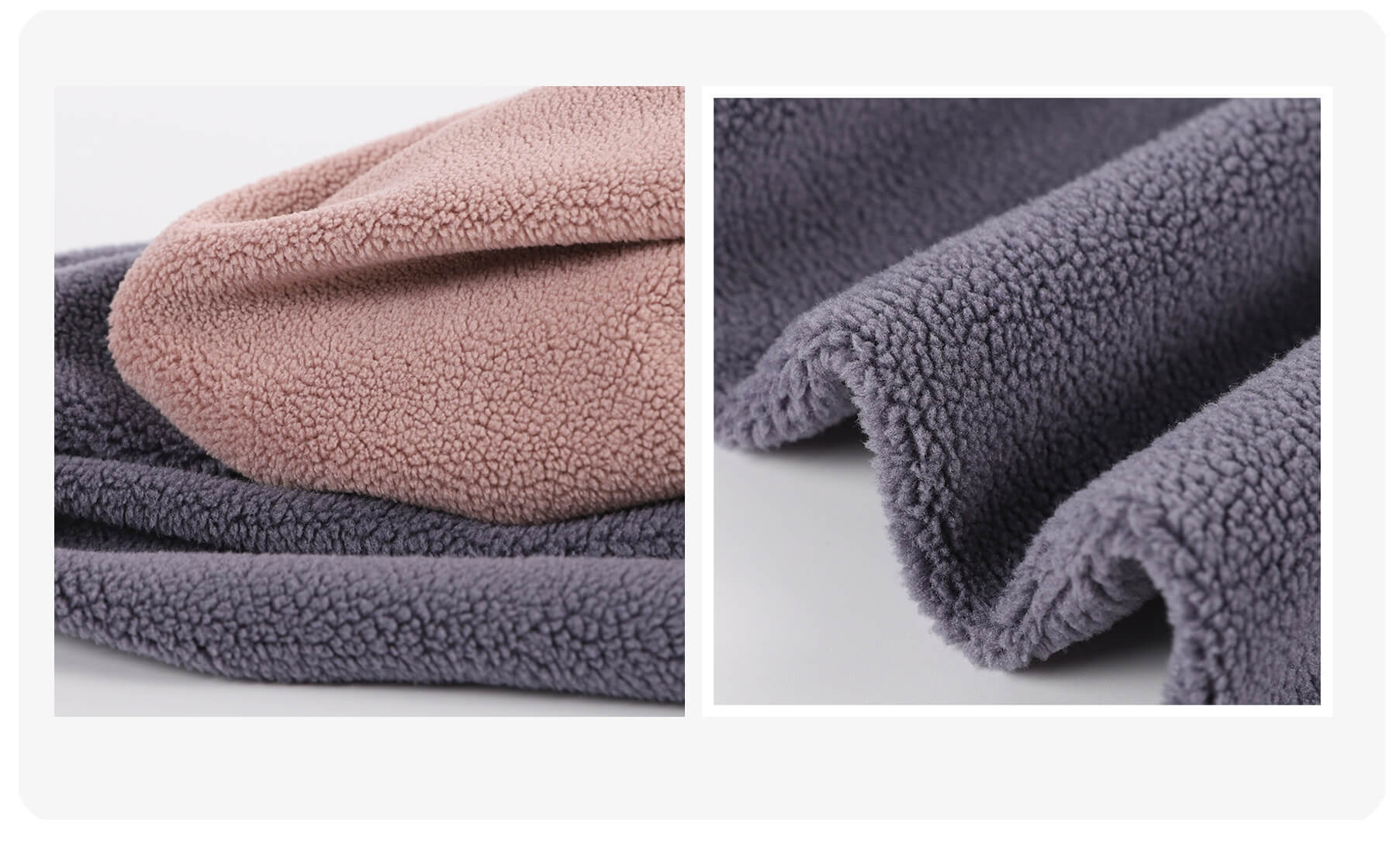
Features
While the term “fleece” refers to any loosely knit fabrics that are brushed to from a soft, fleece-like surface, polar fleece is a specific type that was originally developed by Malden Mills, now known as Polartec LLC.
Polar fleece is thick, notmally between 200 and 400 grams per square meter (GSM) and has the fluffy “pile” on both sides of the fabric. The heaviest weight polar fleeces are best used for coats, while the 100-200 GSM weights are great for hoodies and jackets that can be layered under a raincoat.
It’s an awesome fabric choice for garments meant to be worn in the great outdoors, especially when temperatures are cold. It will keep you toasty and insulated, as well as repel rainwater, and wick the sweat away from your skin.
Pros & Cons
Pros:
- Warm and insulating, great for cold-weather and snowy adventures
- Soft and cozy
- Sweat wicking
- Long-lasting and durable
- Not prone to shrinkage
Cons:
- Best for cold temperatures only
- Can melt when ironed or exposed to heat
- Can retain odors
Woven Nylon and Nylon Blends
What is it?
Nylon is one of the very first man-made fibers and was developed in the 1930s by DuPont, a company also responsible for later developing other synthetic fibers, such as polyester.
To form fabrics, nylon fibers are woven or knitted together, often with other types of fibers to improve comfort.

Features
One of the most versatile fibers, nylon is lightweight, strong, weather-proof, and durable. It’s used in all sorts of items – from women’s stockings to toothbrush bristles, to jackets.
The strength and durability of nylon make it a great fabric option for outerwear, such as hoodies and coats. It’s also water-resistant, dries quickly, and is easy to clean – features any outdoorsy person needs in a jacket!
Unfortunately, the hard-wearing, weather-repelling nature of woven nylon gives it stiffness and a lack of breathability that can sacrifice comfort for the wearer by trapping sweat next to the body. That’s where nylon blends come into play!
When blended with other fibers, especially natural fibers such as cotton, the breathability of the fabric is improved and it has a nicer drape and softer feel, while still retaining strength from the nylon. However, bringing in more comfortable fibers will often reduce the water resistance of the fabric, making nylon blends best for climates that don’t receive a ton of rain.
Pros & Cons
Pros:
- Durable
- Water-resistant and dries quickly
- Lightweight
- Abrasion and wear resistant
- Easy to clean
- Not prone to wrinkling or shrinking
Cons:
- Not breathable
- Can be stiff and is not stretchy
- Non-absorbent
- Not heat resistant (*do not iron*… it may melt)
- Doesn’t retain warmth, so it needs an insulating lining layer for cold climates
Velour Fabric
What is it?
Velour is a beautifully textured, luxurious fabric, usually made from cotton fibers, that is similar in look and feel to velvet.

Features
While velour has such a similar look to velvet that it’s often mistaken for its more expensive counterpart, velour is actually knitted, whereas velvet is woven. Because it’s a knitted fabric, velour has natural stretch built in – making it very comfortable for casual, everyday clothing.
In addition, both velvet and velour have a “pile” – a textured surface formed by looped or cut threads. The pile on velvet is usually left as tiny loops, while on velour it is trimmed down to form short tufts that catch the light beautifully.
Velour is an extremely soft fabric that will keep you reasonably warm, as the pile of the fabric helps to insulate and trap warmth within the fibers. But the main draw of velour fabrics is the high-end, luxury look that it brings to any garment – especially casualwear like hoodies!
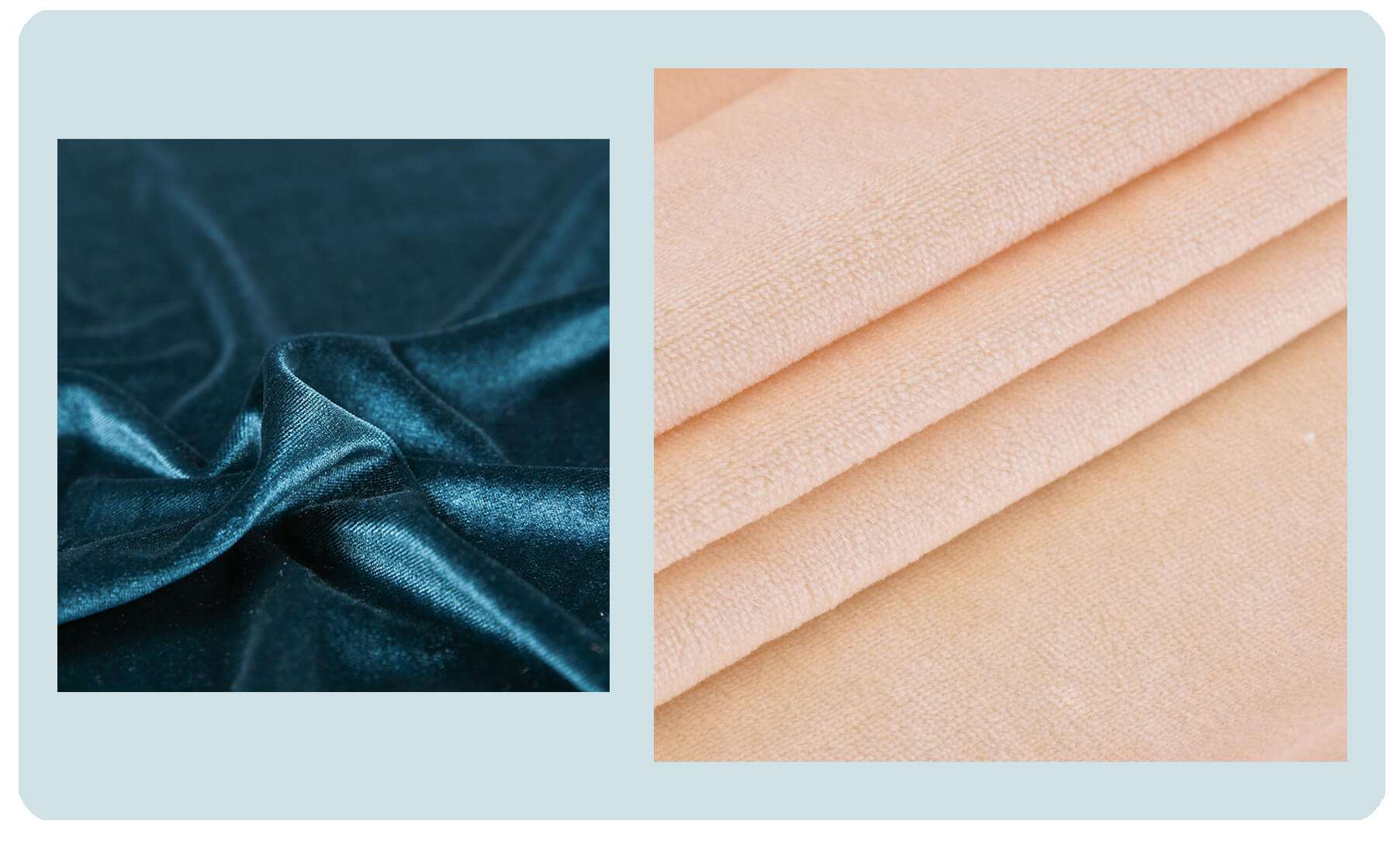
Pros & Cons
Pros:
- Soft to the touch
- Comfortable and stretchy
- Beautiful, luxurious sheen to the fabric
- Warm and insulating
- Breathable, cotton fabric
Cons:
- Not as warm as fleece if you live in a cold climate
- Tends to shrink on the first few washes
- Not a very durable fabric
- Not suitable for outdoor adventuring – traps dirt and can snag
Waffle Fabric
What is it?
Waffle knit fabric, or thermal knit, has a square “waffle” or honeycomb pattern knitted into it to help insulate the wearer by trapping their body heat within the fabric.
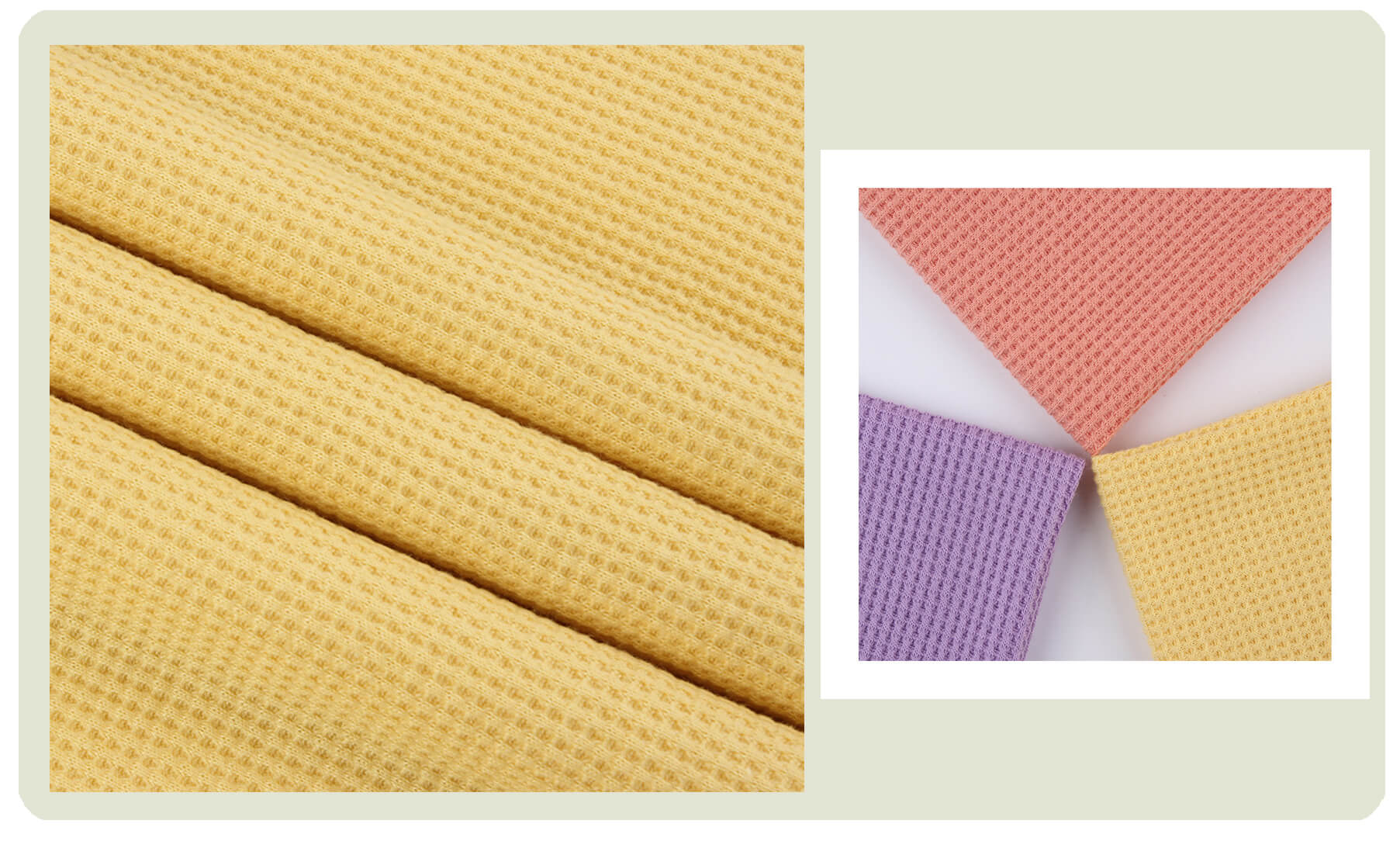
Features
A waffle knit is a comfy, soft fabric that has some natural stretch built in, making it perfect for cozy loungewear and hoodies.
It is often made with cotton or cotton blend fibers but can be made from just about any garment-making fiber, such as polyester or even merino wool. Choosing a waffle fabric made from cotton or another natural fiber will improve breathability and comfort over a synthetic fiber.
Knitted waffle fabric is a great option for hoodies as the fabric’s textured surface helps retain warmth, making it perfect for layering year-round. It’s also an absorptive fabric that helps to pull sweat away from the body, so it’s quite comfortable to wear.
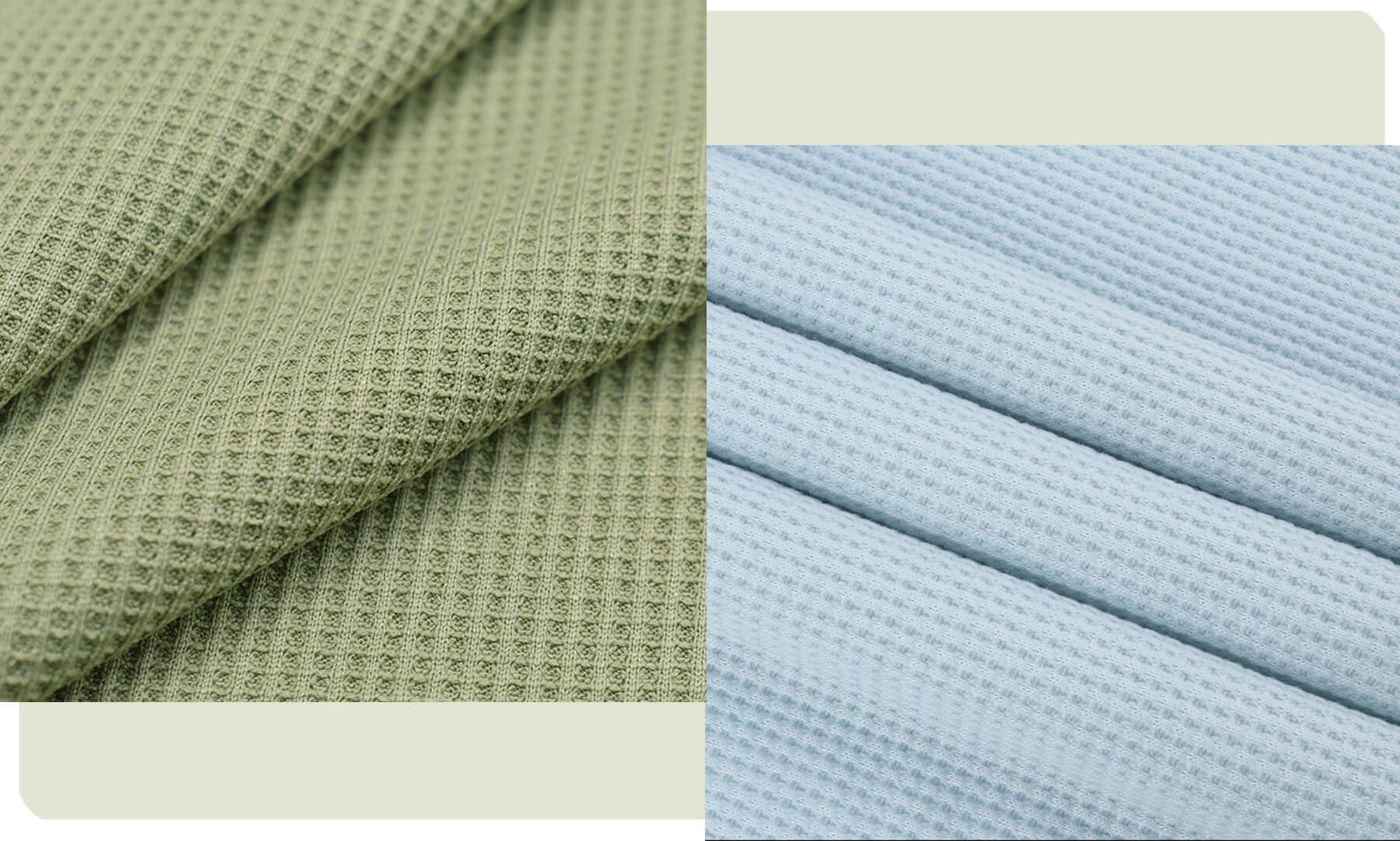
Pros & Cons
Pros:
- Stretchy and comfortable
- Breathable
- Moisture absorbent
- Warm and cozy
- Versatile and great for layering
Cons:
- Can be prone to shrinkage if made from cotton
- Not as warm as a fleece, won’t be great for very cold climates
- If you have sensitive skin, the texture may not be comfortable for you
These six fabrics are all great options for hoodies – each one has its own unique characteristics, making the choice of the perfect hoodie fabric a personal one based on your needs.
If you have any questions or need help deciding what type of fabric is the ideal choice for you, we are a China hoodie manufacturer with many years of experience producing hoodies and jackets of all different types – feel free to reach out!
